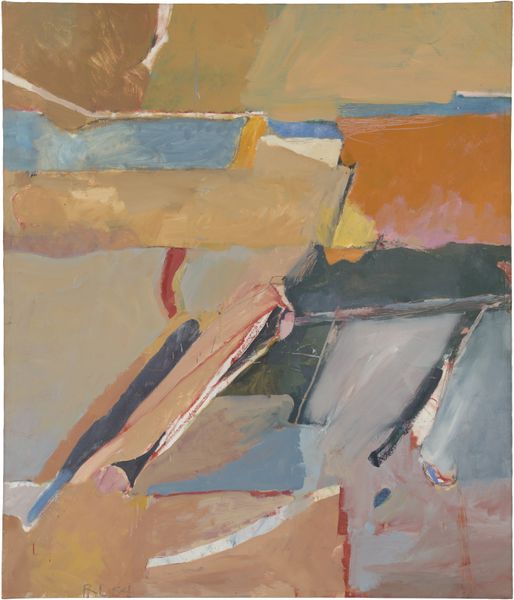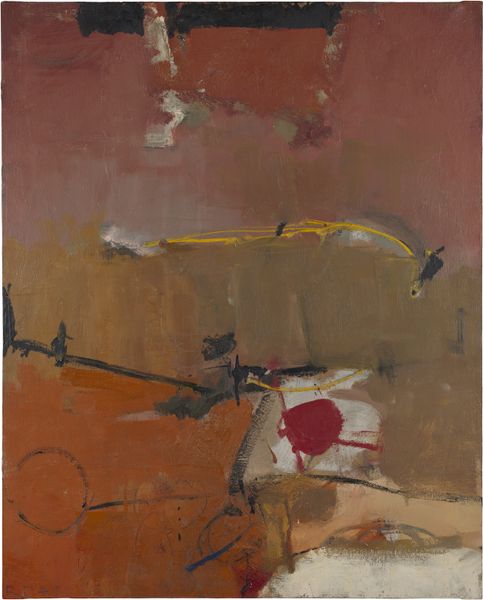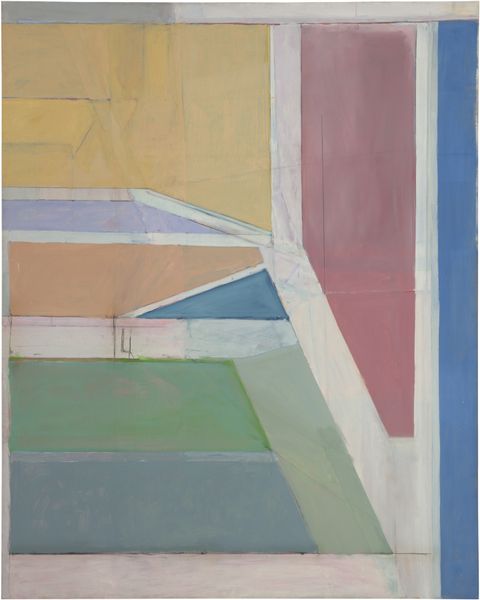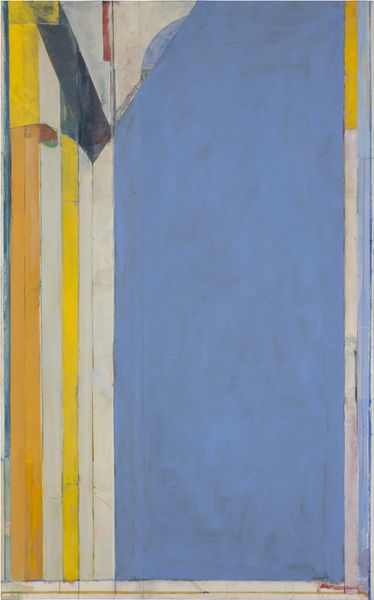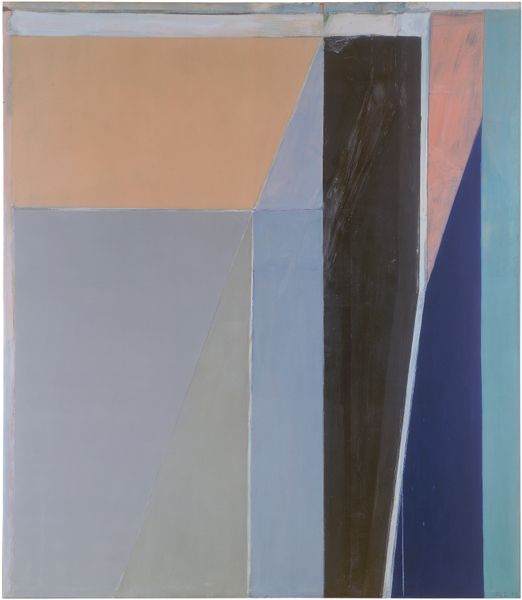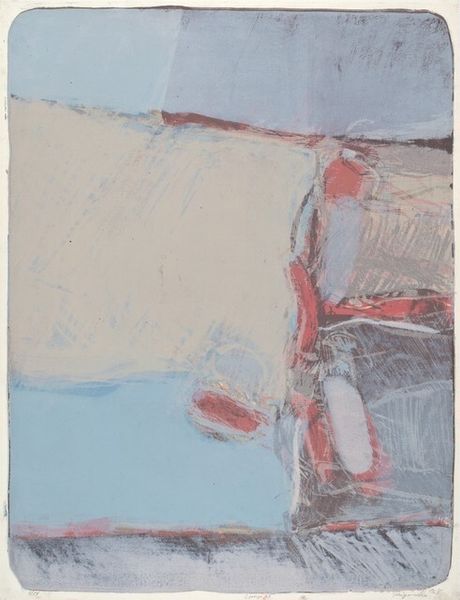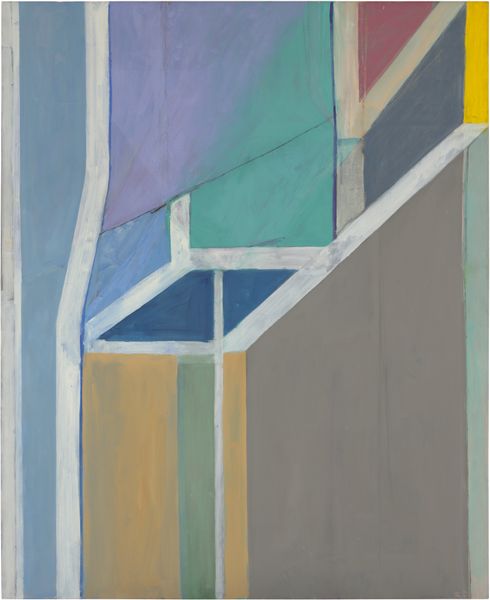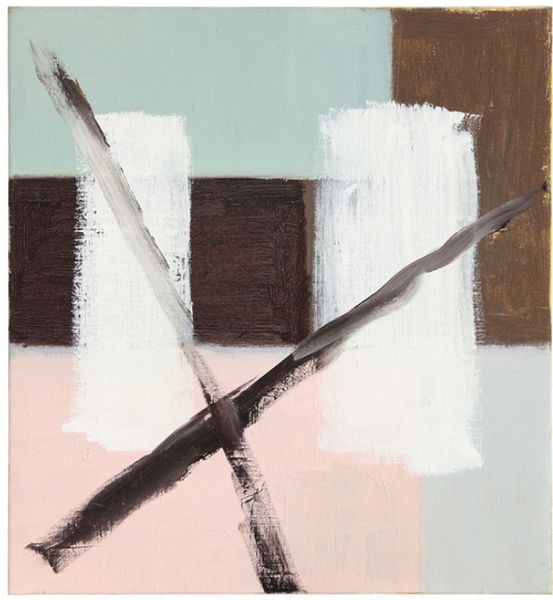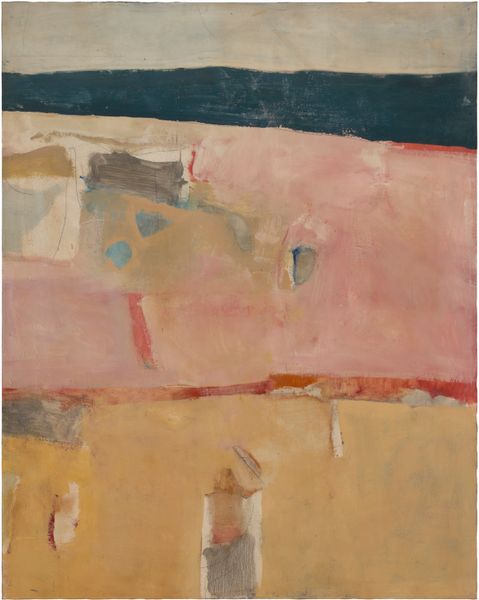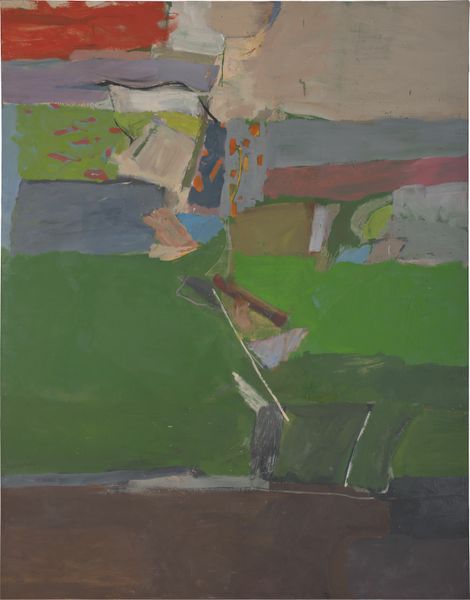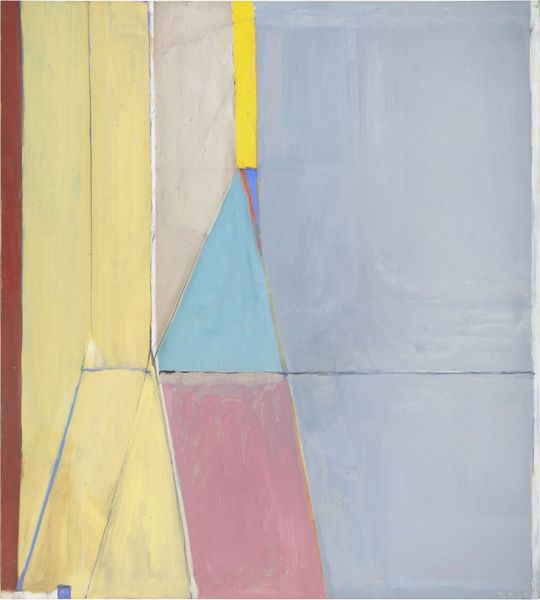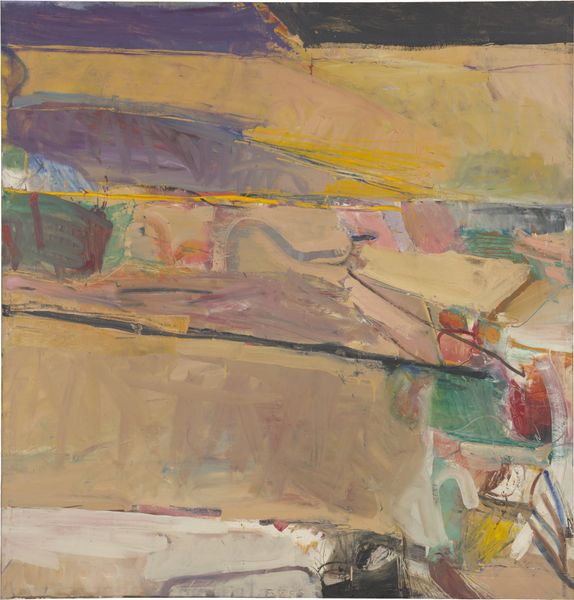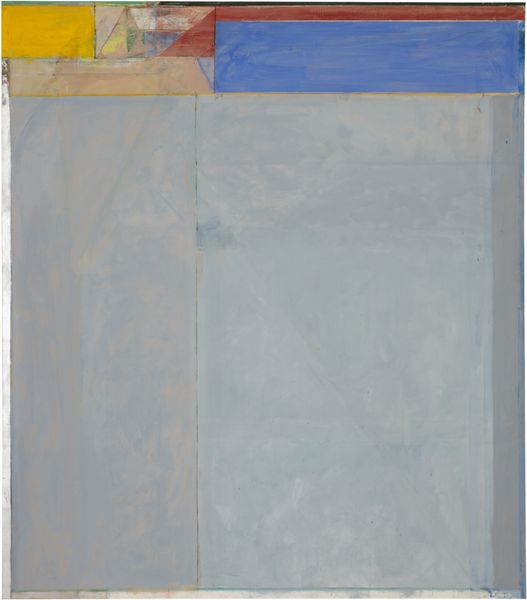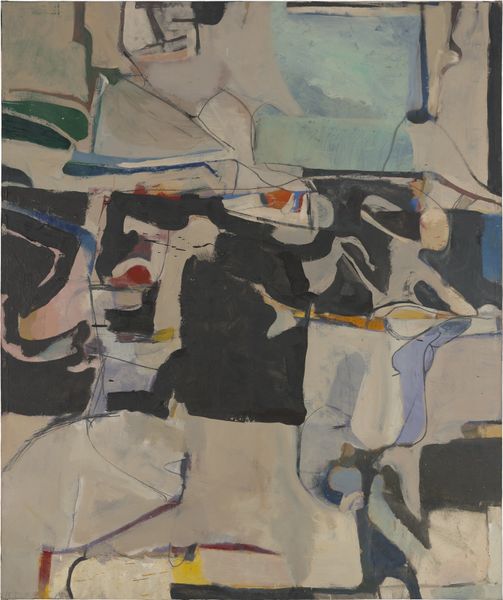
oil-paint
abstract-expressionism
oil-paint
oil painting
bay-area-figurative-movement
modernism
Dimensions: 37.1 x 27.3 cm
Copyright: Richard Diebenkorn Foundation
Editor: Here we have Richard Diebenkorn's "Knife in a Glass" from 1963, created with oil paint. There's something about the stillness, and the unusual angle of the knife that creates a slightly unsettling feeling. What do you see in this piece, in terms of what it might represent or reflect about its time? Curator: This seemingly simple still life provides a window into the anxieties of the Cold War era. The domestic scene—knife, glass—is subverted. The knife, an object of both utility and potential violence, is precariously placed, almost threatening. Consider how domesticity became a battleground during that time, reflecting deeper fears about security and the fragility of peace. What does that awkward placement suggest to you about stability? Editor: It makes me think about how things that look normal on the surface might actually be quite dangerous or unstable. It’s like a symbol for hidden tensions, maybe even the threat of nuclear war hanging over everyday life? Curator: Precisely. And think about the composition: the off-kilter angle, the muted colors. It's not about celebrating domestic bliss; it's about questioning it. Diebenkorn was deeply affected by the social and political climate. We should consider his geographical context, living in California and participating in the abstract expressionist scene emerging from a post-war American experience. The knife is an object, but it also exists as line, form and texture. The way the colours are distributed… Do you observe anything particular about that? Editor: Yes, it's interesting how the colors inside the glass sort of mirror and distort the colours outside, further unsettling the image. Also how these thick planes and strokes render everything off balanced. I hadn't thought about how the context of the Cold War would have influenced an artist like Diebenkorn. Curator: Right, it's not just a knife in a glass. It’s a reflection of societal unease, a commentary on the perceived safety of American life in the face of global tension. Art always holds these intersecting social textures, if we're attentive enough to notice them.
Comments
No comments
Be the first to comment and join the conversation on the ultimate creative platform.
